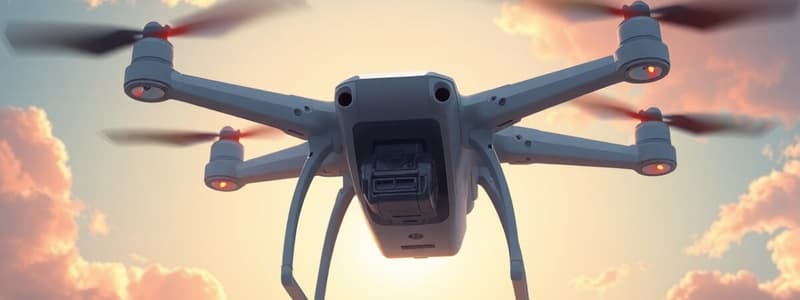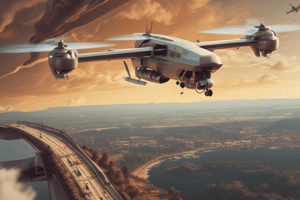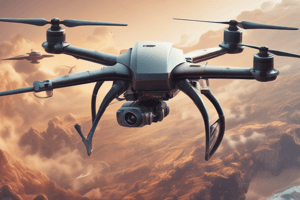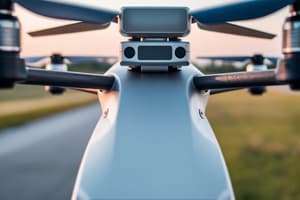Podcast
Questions and Answers
Which of the following is NOT part of the preflight familiarization and inspection process for remote pilots?
Which of the following is NOT part of the preflight familiarization and inspection process for remote pilots?
What is the maximum groundspeed allowed for a small unmanned aircraft according to the regulations?
What is the maximum groundspeed allowed for a small unmanned aircraft according to the regulations?
In which of the following scenarios can a small unmanned aircraft exceed an altitude of 400 feet?
In which of the following scenarios can a small unmanned aircraft exceed an altitude of 400 feet?
What must be ensured regarding the power of the small unmanned aircraft before operation?
What must be ensured regarding the power of the small unmanned aircraft before operation?
Signup and view all the answers
What minimum flight visibility must be maintained by the remote pilot in command while operating a small unmanned aircraft?
What minimum flight visibility must be maintained by the remote pilot in command while operating a small unmanned aircraft?
Signup and view all the answers
Which of the following is a requirement when operating a small unmanned aircraft system over human beings?
Which of the following is a requirement when operating a small unmanned aircraft system over human beings?
Signup and view all the answers
Which of the following should NOT be included in the information provided to participants in a small unmanned aircraft operation?
Which of the following should NOT be included in the information provided to participants in a small unmanned aircraft operation?
Signup and view all the answers
What aspect is essential for ensuring the safety of attached objects on a small unmanned aircraft?
What aspect is essential for ensuring the safety of attached objects on a small unmanned aircraft?
Signup and view all the answers
Study Notes
Preflight Familiarization
- Remote pilot must assess operating environment, considering risks to people/property near the aircraft, both on the ground and in the air
- Includes local weather, airspace restrictions, people/property locations, and other ground hazards
- Inform all participants about operating conditions, emergency/contingency procedures, roles/responsibilities, and potential hazards
- Ensure all control links between ground control station and aircraft are working properly
- Ensure sufficient power for intended operation time (if powered)
- Secure any objects attached to or carried by the aircraft to avoid affecting flight characteristics/controllability
- If operating over people (Subpart D), must comply with § 107.110, § 107.120(a), § 107.130(a), or § 107.140
Operating Limitations
- Aircraft groundspeed must not exceed 87 knots (100 mph)
- Maximum altitude is 400 feet above ground level, unless within 400 feet of a structure
- Maximum altitude is then limited to 400 feet above structure's highest point (not from ground)
- Minimum flight visibility from control station is 3 statute miles
- Measured as the average slant distance at which unlighted/lighted objects are visually identifiable during day/night
- Minimum distance from clouds is 500 feet below the cloud and 2,000 horizontal feet from the cloud
Remote Pilot Certification
- Transponders are prohibited on small unmanned aircraft systems unless authorized by the Administrator
Studying That Suits You
Use AI to generate personalized quizzes and flashcards to suit your learning preferences.
Description
This quiz covers essential safety protocols for remote pilots during preflight familiarization and operating limitations. It emphasizes the importance of assessing the operating environment, communication with participants, and adherence to regulatory standards. Understanding these guidelines ensures safe and compliant drone operations.




